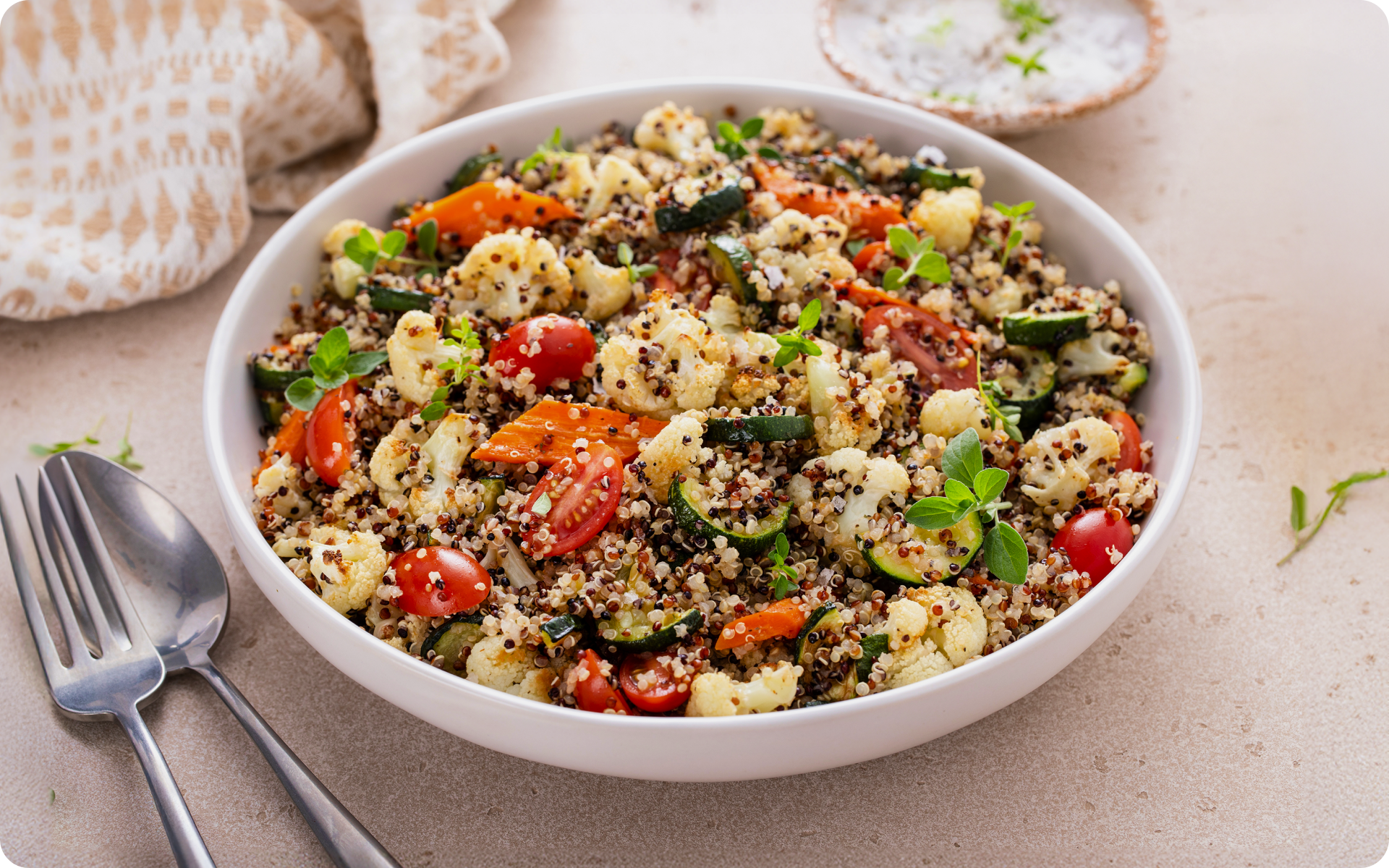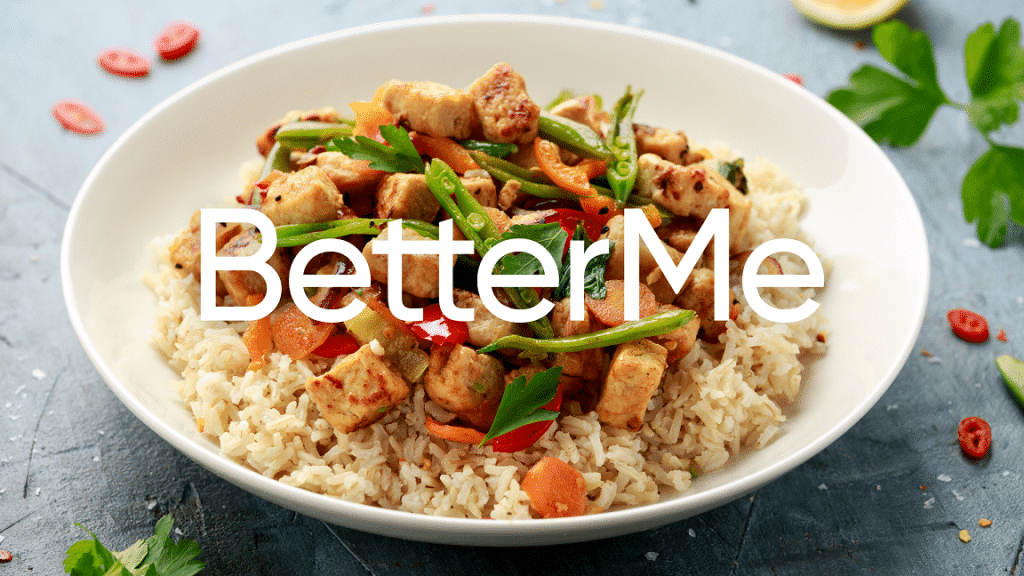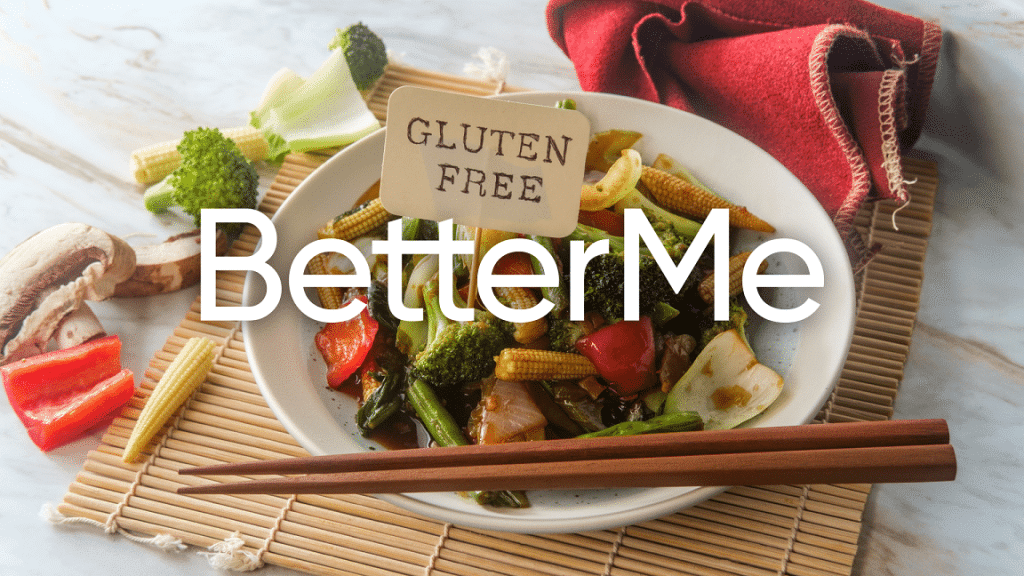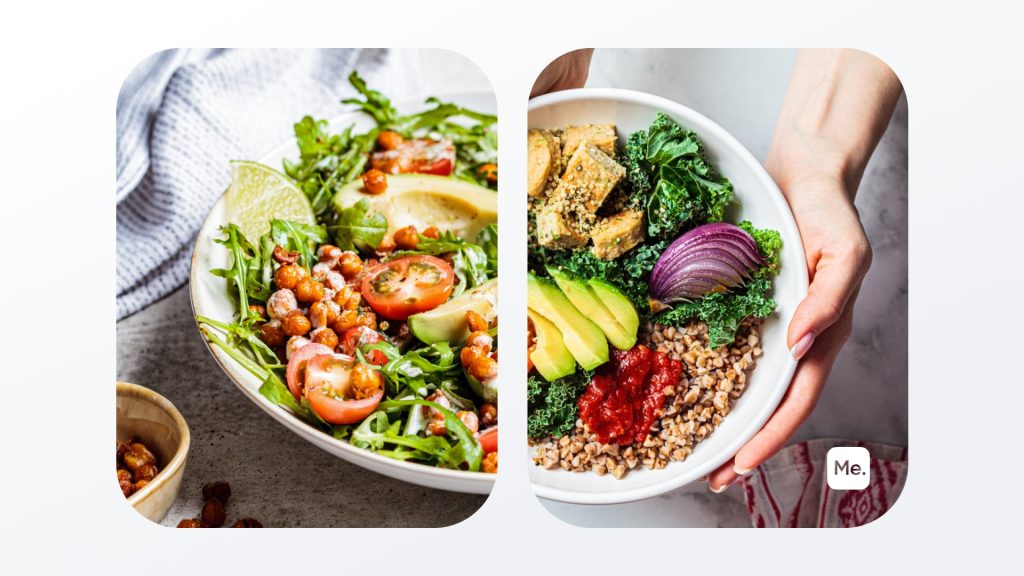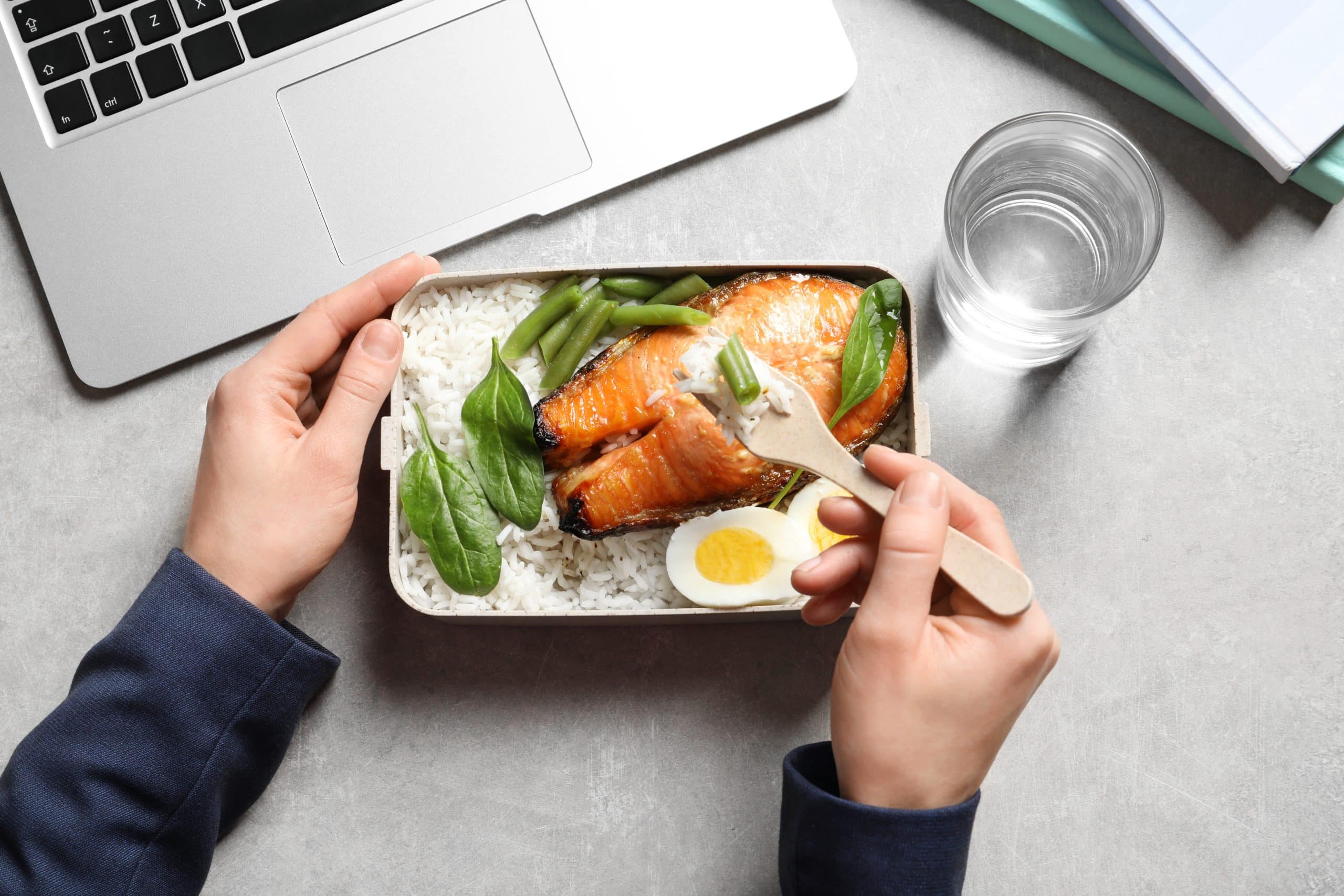In recent years, the popularity of quinoa as a healthy food has had a steady rise with people from medical professionals to nutritionists and even your favourite foodie on Instagram talking about it and its incredible benefits. However, one thing that never seems to appear in these posts and videos are the possible side effects of eating quinoa.
While this is a genuinely loved grain, some people have experienced some not positive consequences after ingesting it. In today’s article we are going to take a deep dive into its health benefits, calories and nutrition facts as well as some side effects that you may have been unaware of.
What Is Quinoa?
Considered as one of the world’s healthiest foods, quinoa (pronounced keen-wah) has been around for centuries. Its presence is traced as far back as the time of the Aztecs and Incas. However, despite it being around so long, quinoa only recently gained popularity with its status growing exponentially in 2013 after the United Nations Food and Agriculture Organization declared 2013 the International Year of Quinoa (4).
But what is it exactly?
First of all, contrary to popular belief, quinoa is a seed and not a grain. According to The Huffington Post, this seed is often classified as a cereal grain, which is not true. Instead, it is a seed that is harvested from a tall, leafy plant (the Chenopodium quinoa plant), a relative of spinach, beets and chard. It can also be referred to as a pseudo-cereal grain (13).
An important distinction to make between cereals and pseudo-cereal grains is that (13, 8)
- Cereals/true grains are the edible seeds of specific grasses belonging to the Poaceae plant family. They include examples such as oats, wheat, rice, corn, barley, rye, sorghum and millet.
- Pseudo-cereals/pseudo-grains are seeds that are used (i.e. cooked and eaten) in the same way as traditional grains. Examples include Inca wheat (aka Amaranth), buckwheat, and quinoa.
Basically, quinoa is a black, red, yellow, or white seed/pseudo-grain native to the Andean region of South America. This seed gained its popularity partly due to the gluten-free lifestyle trend as well as the veganism movement.
Want to build an attention-grabbing bubble butt, blast away fat that’s stored in all the wrong places, spring-clean your diet, turn back the clock on your skin, skyrocket your self-confidence and shatter your insecurities? Check out the BetterMe app and set this plan in motion!
Quinoa Nutrition Facts
According to the U.S. Department of Agriculture (USDA), one cup (185 g) of cooked quinoa has the following nutrients (12)
- Calories – 222
- Carbohydrates – 39.4 grams
- Fats – 3.55 grams
- Protein – 8.14 grams
- Fiber – 5.18 grams
But this is not all that this seed has to offer. When it comes to quinoa nutrition, this pseudo grain also contains calcium, iron, magnesium, phosphorus, potassium, vitamin E, B vitamins and several antioxidants (12).
What Are Some Quinoa Benefits And Side Effects?
Like most things in the world, this food source has advantages and disadvantages that come with consuming it. Let’s take a look at what they are.
What Are The Benefits Of Quinoa In Your Diet?
It Is Very Nutritious
As mentioned above, this seed is loaded with several vitamins and minerals that are fantastic for your body: They include:
- B vitamins. Namely B-1 (thiamin), B-6 (pyridoxine), and B-9 (aka folate).
Folate is essential for red blood cell formation and for healthy cell growth and function, especially during early pregnancy.
Thiamin helps turn carbs into energy and plays a key role in nerve, muscle, and heart function.
Pyridoxine is important for normal brain development and for keeping the nervous system and immune system healthy
- Iron Important for growth and development. It is also used to make hemoglobin which helps transport oxygen from the lungs to all parts of the body
- Calcium Mostly used to build and maintain strong bones. It is also used to help your heart, muscles and nerves function properly
- Magnesium Supports muscle and nerve function as well as energy production
- Phosphorus Helps with the formation of bones and teeth as well as the growth, maintenance, and repair of cells and tissues
- Potassium Helps with nerve function, the movement of nutrients into cells and waste products out of cells, heartbeat regulation and muscle contraction
- Vitamin E Supports your immune system and helps with cell regeneration
It also has trace amounts of zinc, manganese, copper, and selenium which all help keep your body functioning at its best.
Read More: The Mediterranean Diet Pyramid: Use This To Start A Heart-Healthy Way Of Eating
Has Antioxidants
Quinoa has been shown to have high amounts of the plant antioxidants quercetin and kaempferol (14, 1). These antioxidants are believed to not only support your body’s defenses against infection and oxidative stress, but to also protect against heart disease, diabetes, and several cancers, including skin and liver cancers (7, 9).
It Is High In Fiber
With about 5.18 grams of fiber per cup of this pseudo grain, you get about a fifth of the recommended fiber intake per day. Fiber helps keep you full longer, which helps with calorie control making it perfect for weight loss. Fiber has also been shown to help with gut health, fight inflammation, and lower cholesterol and blood sugar levels among many more benefits.
It Is High In Protein
In terms of grains and other pseudo grains, quinoa is among the highest in proteins. Other plant-based sources high in protein include buckwheat, couscous, oatmeal, brown rice and amaranth. Protein helps with weight loss and maintenance, building muscle and reducing muscle loss, boosting your metabolism and lowering blood pressure, among many other benefits.
What Are The Side Effects Of Eating Quinoa Everyday?
Despite these pseudo grains’ many positives, not everyone seems to have such a great time with it. Here are some quinoa side effects to look out for if you are looking to add this seed to your diet.
A Quinoa Allergy
According to Healthline a quinoa allergy can arise in some people. Some symptoms include inflammation in the
- Skin which presents as eczema, hives, and itchiness
- Lungs you many experience asthma like symptoms such as wheezing, shortness of breath, coughing, or tightness of chest
- Digestive tract which presents as stomach pain, nausea and diarrhea
If you have a more severe allergy, you may experience an elevated heart rate, pale skin, low blood pressure, and the inability to breathe. According to a 2009 article quinoa allergy side effects could also cause the dreaded anaphylaxis (like other food allergies) which can be fatal if not treated right away (2).
This side effect has mostly been linked to saponin, a chemical found in quinoa’s coating. It could also be a reaction to the protein or oxalates found in the seed. One very recent study by the journal of Molecular Nutrition & Food Research found that in rats, this pseudo grain has the ability to increase intestinal permeability (10).
Also known as a leaky gut, increased intestinal permeability is sometimes a part of the pathology of gastrointestinal conditions such as celiac disease, Crohn’s disease, and irritable bowel syndrome (6, 5).
Bloating And Gas
While quinoa is an excellent source of fiber, most of the fiber found in this seed is actually insoluble. Consuming too much fiber can lead to gastrointestinal side effects such as bloating, gas, stomach cramps, or dehydration among other symptoms. To avoid this particular quinoa side effect, stick to a reasonable portion size (1 cup cooked) and drink more water with it.
Could Worsen Symptoms Of Crohn’s Disease
If you suffer from Crohn’s disease, it would be in your best interest to stay away from this specific food during a flare up. High fiber foods like whole grains and pseudograins, including quinoa, can be irritating when your intestine is actively inflamed. You may be able to eat quinoa when you are not going through a flare up, but for some people it could be a trigger, so work with your doctor or dietitian to develop an individualized eating plan and help minimize your symptoms.
On the other hand, research in animals has shown that this seed provides prebiotic fiber that can improve the profile of bacteria in the gut, and so may help alleviate intestinal symptoms that are caused by gut dysbiosis (an imbalance of bacteria in the gut) (11).
Could Increase Your Risk Of Kidney Stones
Despite the fact that this grain is gluten-free and is considered a complete protein, people with a history of or a higher susceptibility to kidney stones may need to avoid this pseudo cereal. According to Eat This, Not That, quinoa is higher in oxalates, a substance that binds itself to calcium as it exits the body, increasing the risk of kidney stones in people who are prone to them.
Lean and toned up body isn’t just a far-fetched fantasy. Check out the BetterMe app and watch it propel your weight loss journey into high gear!
FAQs
How Many Calories In Quinoa?
One cup of cooked quinoa has 222 calories. That is similar to other grains and grain products.
Is Quinoa Gluten Free?
Yes, it is. Quinoa is a naturally gluten-free pseudo grain that can be consumed by anyone on a gluten-free diet – or even more specifically anyone suffering from gluten sensitivity or celiac disease.
One study in The American Journal of Gastroenterology found that patients suffering from celiac disease could safely consume this pseudo grain (about 50 g) every day without worsening their condition (3)
A Word Of Caution
- While most varieties of quinoa are gluten free, one study published in 2012 saw that some varieties contain proteins that look enough like the wheat prolamins — gliadin and glutenin – to possibly trigger a reaction in some celiac disease patients (15).
- Some brands of quinoa may be processed on the same equipment that process/handle foods or products with gluten and can contaminate the quinoa.
To prevent any mishaps, it is recommended that you always check the packaging of your quinoa to ensure that it’s labeled ‘gluten-free’ and to gradually increase your quinoa intake (try starting with just 50 g a day) to ensure that you will not have any unwanted side effects.
Read More: Gluten-Free Diet Weight Loss Diet: Is It An Effective Solution For Stubborn Fat?
Calories In Quinoa: Is This Pseudo Grain Low Carb And Keto Friendly?
Quinoa is a nutritious whole grain high in protein and fiber, but despite its many benefits – including weight loss – this seed is sadly not ketogenic or very low-carb diet friendly. As seen in the above ‘quinoa nutrition facts’ section, just one cup of this pseudo cereal has 39.4 grams of carbohydrates. This is very similar to the amount in 1 cup of other grains and grain products.
If you are on a ketogenic diet, then quinoa should not be on your list of foods to eat. Remember that keto is very strict on daily carbs intake – about 20 to 50 g of carbs a day. Eating quinoa while on keto meals uses up your allotted carb intake. This means that you can’t eat either fruits or vegetables which have carbs and very important nutrients. Doing this long-term will lead to nutritional deficiencies.
On the other hand, if you are on a moderately low-carbohydrate diet you can have some quinoa but you’ll need to limit your intake. Try having just half or even a quarter of your regular quinoa serving and filling the rest of your plate with leafy greens, other non-starchy vegetables and protein.
Does Quinoa Have Protein?
Yes, it does. In terms of quinoa nutrition, the pseudo grain gives you eight grams of protein per cup. As if this were not enough, the seed is also considered a plant-based complete protein. This fact makes the seed such a staple for many vegans and vegetarians around the world.
Complete proteins are those food sources that provide our bodies with the 9 essential amino acids that cannot be naturally produced by our bodies, which is rare in plant-based foods. These essential acids include histidine, isoleucine, leucine, lysine, methionine, phenylalanine, threonine, tryptophan, and valine (16).
The Bottom Line
Despite the potential quinoa side effects mentioned above, this pseudo grain is still considered quite healthy and its benefits certainly exceed the negative side effects. With that being said, it’s always better to be safe than sorry. If you have a history of any of the above mentioned illnesses, please stay away from this pseudocereal or talk to your doctor or dietitian about it. If you are looking to try this seed for the first time, we suggest trying a little at a time so you can monitor how your body reacts to it.
DISCLAIMER:
This article is intended for general informational purposes only and does not serve to address individual circumstances. It is not a substitute for professional advice or help and should not be relied on for making any kind of decision-making. Any action taken as a direct or indirect result of the information in this article is entirely at your own risk and is your sole responsibility.
BetterMe, its content staff, and its medical advisors accept no responsibility for inaccuracies, errors, misstatements, inconsistencies, or omissions and specifically disclaim any liability, loss or risk, personal, professional or otherwise, which may be incurred as a consequence, directly or indirectly, of the use and/or application of any content.
You should always seek the advice of your physician or other qualified health provider with any questions you may have regarding a medical condition or your specific situation. Never disregard professional medical advice or delay seeking it because of BetterMe content. If you suspect or think you may have a medical emergency, call your doctor.
SOURCES:
- Antioxidant and Antimicrobial Activities of Quinoa (Chenopodium quinoa Willd.) Seeds Cultivated in Korea (2017, ncbi.nlm.nih.gov)
- First case report of anaphylaxis to quinoa, a novel food in France (2009, researchgate.net)
- Gastrointestinal effects of eating quinoa (Chenopodium quinoa Willd.) in celiac patients (2014, pubmed.ncbi.nlm.nih.gov)
- General Assembly Launches International Year of Quinoa, with Secretary-General Saying Extraordinary Grain Could Have Significant Impact on Anti-hunger Fight (2013, un.org)
- Increased Intestinal Permeability and Decreased Barrier Function: Does It Really Influence the Risk of Inflammation? (2016, ncbi.nlm.nih.gov)
- Intestinal permeability – a new target for disease prevention and therapy (2014, ncbi.nlm.nih.gov)
- Kaempferol: A Key Emphasis to Its Anticancer Potential (2019, ncbi.nlm.nih.gov)
- Pseudocereal (n.d., sciencedirect.com)
- Quercetin, Inflammation and Immunity (2016, ncbi.nlm.nih.gov)
- Quinoa (Chenopodium quinoa Willd.) Seeds Increase Intestinal Protein Uptake (2021, pubmed.ncbi.nlm.nih.gov)
- Quinoa whole grain diet compromises the changes of gut microbiota and colonic colitis induced by dextran Sulfate sodium in C57BL/6 mice (2018, ncbi.nlm.nih.gov)
- Quinoa, cooked (2019, fdc.nal.usda.gov)
- Quinoa’s ‘Seed Or Grain’ Debate Ends Right Here (2017, huffpost.com)
